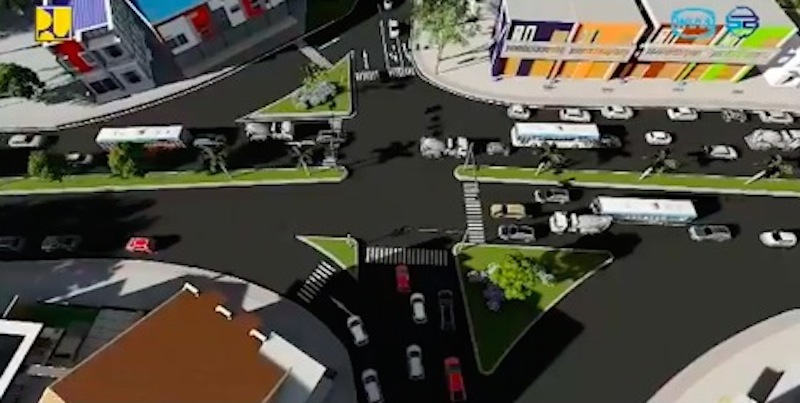Rush hour madness in Bali’s capital city, Denpasar, launched the government into taking action to widen a stretch of the major artery, Jl. Imam Bonjol late last year.
But in order to get the road wider, the project will ultimately pull IDR181 billion (US$13.6 million) out of state funds using Indonesian construction firm PT Wijaya Karya and is projected to take 400 days.
Starting last year, from Nov. 27, 2017, 2.25 kilometers of Imam Bonjol, from Sunset Road to Gunung Soputan, is expected to be wider by Dec. 31, 2018.
“The plan is to make the two existing lanes into four lanes. Right now, the road is nine to 10 meters wide. Later, it will become 14 meters,” Anak Agung Gde Sanjaya, head of the National Road Implementation Center VIII work unit, told reporters in Denpasar on Wednesday.
And much like the situation with the underpass being built at the Ngurah Rai roundabout, roadwork will no doubt only thicken the congestion during the course of the project.
So, i’s gotta get worse before it gets better, right?
Because it’s going to take quite a bit of work before it’s smooth sailing on Imam Bonjol, where cars are just perfectly gliding on by–which is just so wonderfully imagined in a cheesy rendering of the completed project that’s soundtracked by upbeat gamelan. Please start the video at 1:00 for a real chuckle. You probably won’t even recognize it as Bali:

“We know at the time the traffic flow is very dense on Imam Bonjol, so it’s our goal to accelerate the project,” Sanjaya said.
This being Bali, land of a thousand temples, a challenge confronting the project is the positioning of temples and also trees, lining the portion of the road to be widened.
Six temples and 220 trees will have to be relocated, according to a press release put out by the Ministry of Public Works and Housing on Wednesday.
“We will move the (temples) to alternative spots,” said Ida Bagus Made Artamana, chairman of the Imam Bonjol road widening project selection committee, as quoted by Tribun Bali.
“It’s part of the the project’s responsibilities and the obligations of its partners,” he explained.
Additionally, eight temporary projects are being built along the project site to give access to local residents and shopkeepers cutoff by the roadwork.
“We have socialized (the project) with the residents and shop owners around project site. We have found a solution: we will build temporary bridges,” Artamana explained.




